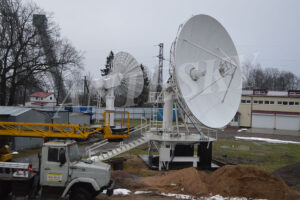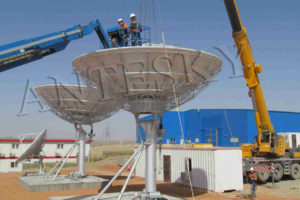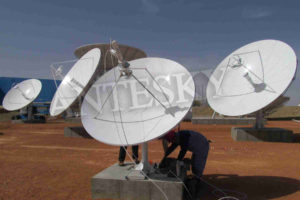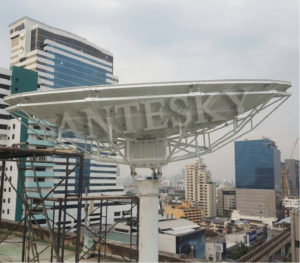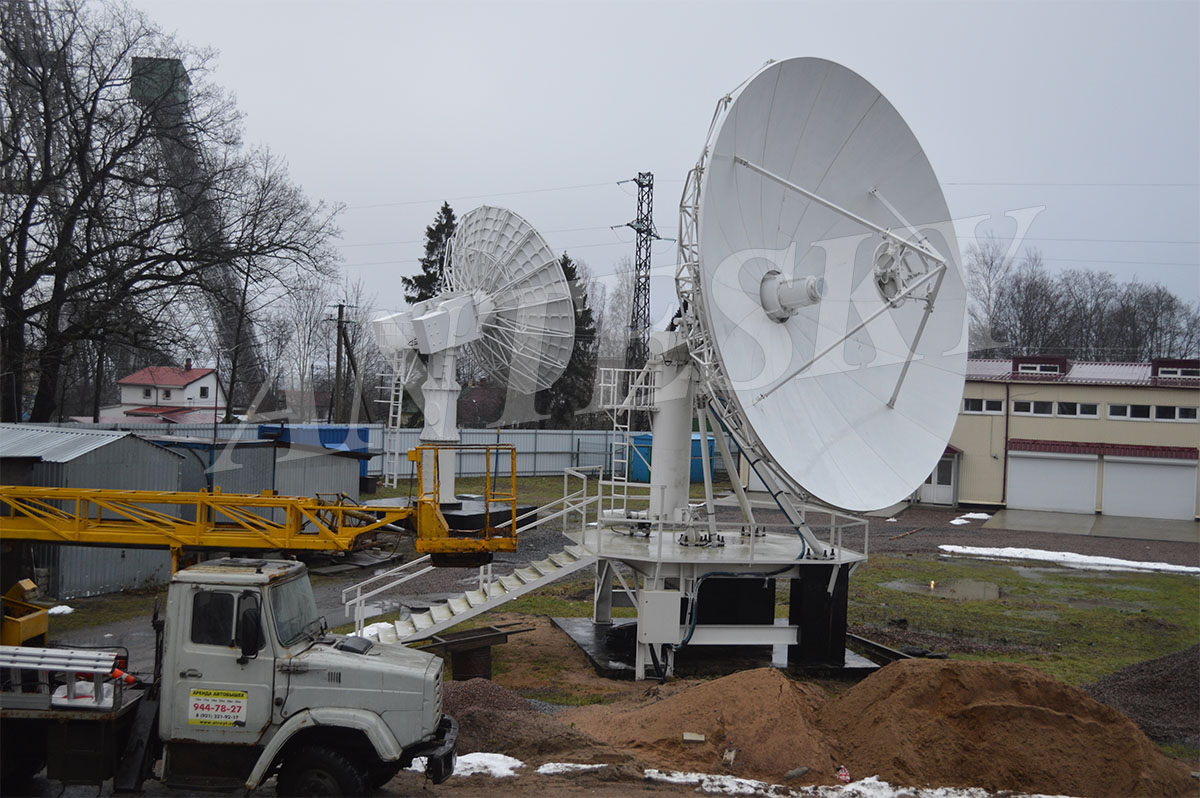
Have you found that we don’t see a large antenna of more than 10 meters in the city, Why? This is related to the characteristics of the earth station. Today, We will introduce the site selection of the satellite antenna in the following.
With the development of satellite communication, satellite antenna are occupying an increasing proportion in radio and television transmission industry. More and more attention has been paid to the design of satellite earth stations. When designing a new satellite antenna station, we must first determine the site of the satellite antenna. It directly determines the quality of the transmitted and received satellite signals, the amount of capital investment, and many practical issues such as installation, operation, maintenance and guarantee. Business personnel should comprehensively consider geographic factors, ground electromagnetic environment, meteorological conditions, safety factors, etc., according to actual application requirements, and make the operation of the receiving station more convenient and efficient operation and maintenance on the premise of ensuring the stable operation of communication services.
- Geography environment
Generally, a satellite antenna with a larger diameter is used in the satellite uplink earth station, so that the antenna has a large mass. In order to ensure that it can fully carry the load of the antenna itself, the installation of satellite antennas, especially large antennas, requires the antenna embedded parts to be embedded in a sufficiently large cement base that has been designed, otherwise it will collapse or destroyed in case of strong winds. In the initial stage, it is necessary to conduct geological exploration to investigate whether the geological conditions can meet the design requirements. At the same time, query the earthquake history of the area to be selected for the lower earth station, whether it is in a landslide or sinking area, in order to take corresponding measures.
1.1 Site of satellite antenna
The site of the satellite earth station should be selected in an open terrain. Normally, it is required to take the antenna foundation as a reference, and the angle between the highest point of the obstacle is less than 3 degrees, to ensure the satellite antenna launch angle, and also consider the future expansion needs.
Let us take our previous project of 9.0m antenna as an example, as you can see that its site was in the suburbs with an open terrain. This is to avoid mutual interference with ground microwaves in the same frequency band and avoid various electrical noises in the city. Also, people should be avoided because the strong radiation emitted by the earth station is harmful to the human body.
Antesky 7.3m&9.0m dual-band antenna in Russia
The satellite earth station not only has an satellite antenna with a large diameter, but also installs a variety of receiving antennas with a small diameter in order to detect the transmission effect. At this time, the radio frequency interference between the antennas should be considered, and the distance between each antenna should be greater than the allowable minimum distance, if necessary, a shield can be set up between the antenna. Below is an IPTV project of 7.5m satellite antenna and 4.5m satellite antenna in Magnolia. We kept the suitable distance between each antenna for avoiding frequency interference.
Installation of 7.5m antenna and 4.5m antenna in Magnolia
The receive only antennas can be installed in urban areas because it does not transmit signals and has no external electrical interference compared with Tx./Rx. antennas. However, it is also necessary to prevent interference from ground microwaves in the same frequency band. Field tests are required to finalize the site selection because of obstructed houses, trees, etc. .
4.5m TVRO antenna installed on building roof of city center
The location of the earth station depends on the size of the city. Normally, the antenna site needs to be more than 10 kilometers to dozens of kilometers away from the city center.
1.2 Weather condition
Weather conditions have a great impact on the satellite’s uplink and downlink signal transmission.
Severe weather conditions such as strong winds, rainfall, and snowfall will cause the signal of the earth station to mourn, resulting in an increase in the bit error rate of the uplink and downlink signals. The statistical results show that when the antenna is affected by strong wind and the deviation of the main upstream beam of the antenna exceeds 1/10 of the beam width, the signal transmission will be affected. Therefore, when designing a satellite earth station, it is necessary to consult the local meteorological bureau for detailed local historical data, use an antenna with excellent wind resistance, and take certain wind resistance measures.
Raindrops will increase the noise temperature of the upstream and downstream systems and cause an increase in overall noise. The absorption and scattering loss of rainfall will reduce the carrier power of the uplink and downlink signals, so there must be sufficient power margin when designing the earth station. We have to consider the impact of other environmental conditions including sand, dust, corrosive gas, and salt spray on the satellite uplink earth station. Antesky antenna main reflector consists of 16 aluminum alloy panels, every panel adopts high precision stretch-forming and high strength framework rivet connection, which can assure antenna weight, precision and reduces the workload on installation, making antenna has enough strength and wind loading. The surface treatment adopts the technology of paint spraying after hop-dip galvanizing. All fastener under M12 are stainless steel parts, enhancing its anti-corrosion, making the antenna life longer than 15 years. Please check our 6.2m antenna in America and 3.7m satellite antenna in HongKong, China which all operated well after experiencing strong typhoon.
- Electromagnetic environment
Determine whether there are sources of interference around. If the interference cannot be avoided, the interference should be reduced below the allowable value. Electromagnetic interference to remote stations is mainly caused by ground microwave stations, radar systems, high-voltage electrical lines and equipment, aircraft, etc. Among them, co-frequency interference from ground microwave stations is the most harmful. In order to ensure that the remote station can still work normally under interference conditions, the interference level is generally required to be lower than the signal level by 25dB (for TV signals, it should be lower than 30dB).
- Safety
Satellite communication is essentially a working mode of microwave relay. The safety factors of satellite earth station mainly consider the following two aspects. First of all, it is the impact of electromagnetic radiation on the human body. Secondly, it needs to be considered that the satellite earth station needs to be far away from various inflammable and explosive materials and hazardous chemicals. If you want to store these items, you must be responsible for them, take them as you use them, and store them in places far away from public areas. .
Finally, in some special areas, in addition to selecting a suitable site, antenna equipment itself selection is also necessary. In coastal areas, due to severe salt spray and mold erosion, anti-corrosive reflector surfaces and feed are important. We have 4.5 antenna project in Senegal for anti-corrosive. In mountain areas with severe solar ultraviolet radiation, we should apply aluminum alloy panels with high precision stretch-forming other than glass fiber reinforced antenna is not advisable for aging and shortening service life. In areas with typhoons, pay much attention to whether the sturdy supporting structure . If necessary, the antenna should be driven up to 90 degrees to zenith status, and the antenna should be tightened and fixed with a steel wire around to reduce wind load and prevent antenna damage as one of our Russian client fixed 6.2m antenna before. In order to reduce the wind load, also you can consider mesh antenna with limited cost.
Hope all above information is helpful for you when selecting site for satellite antenna. If you have any question, welcome to WhatsApp us directly or via sales@antesky.com. Thanks.

